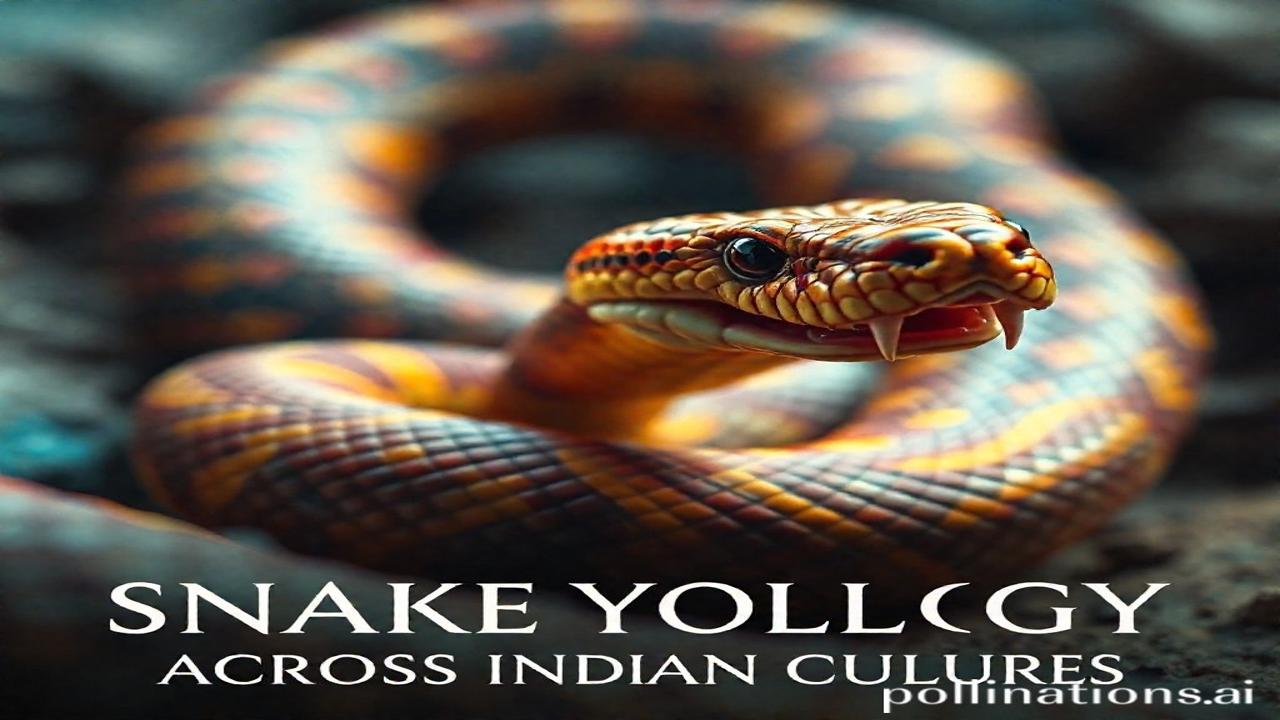Waqt Ki Nadi Mein Behate, Sarpilon Ke Itihas: Snake Mythology Across Indian Cultures
Kabhi socha hai, jab baarish ki pehli boond mitti ko chhoo-ti hai, toh ek ajeeb si khushboo aati hai? Woh khushboo, jaise zameen ke andar se koi kahani aa rahi ho. Aur un kahaniyon mein, kai baar, sarp hote hain – kabhi bhagwan, kabhi rakshas, kabhi dharam ke rakshak. This is the magic of India, where snakes are not just reptiles, but living legends woven into the very fabric of our being. Aao, aaj hum chalte hain, in sarpilon ke duniya mein, explore karne ki kaise Indian cultures ne inko pooja, darr, aur izzat se dekha hai.
Nag Panchami Se Lekar Kundalini Shakti Tak: A Historical Context
Snakes, or nagas, have been integral to Indian mythology for millennia. Archeological evidence suggests snake worship dating back to the Indus Valley Civilization (circa 3300-1700 BCE). Mohenjo-daro aur Harappa ki seals pe snakes ke images mile hain. These images weren’t just decorations; they were symbolic, representing fertility, protection, and the cycle of life and death.
Later, Vedic texts like the Atharvaveda mention snakes as powerful entities, both benevolent and malevolent. Puranas, especially the Mahabharata, elaborate on the serpent race – the Nagas, with figures like Vasuki, Shesha, and Takshaka taking centre stage. Nagarjuna (2nd century CE), the Buddhist philosopher, even derived his name, meaning “king of snakes,” highlighting the snake’s association with wisdom and protection.
But why are snakes so important? Well, think about it. India, with its diverse geography, has always been home to a plethora of snake species. Farmers depended on rainfall for their crops, and snakes, often associated with water and fertility, became symbols of prosperity. Plus, the snake’s ability to shed its skin was seen as a metaphor for rebirth and immortality, concepts central to Hindu and Buddhist philosophies.
Zameeni Sach: Log Aur Jeevan
Imagine a small village in Kerala, nestled amongst coconut groves. The air is thick with the smell of spices and jasmine. Inside a traditional tharavad, a Nair family prepares for Naga Mandala, a ritual dedicated to snake deities. The women, draped in silk sarees, sing ancient hymns as they decorate the courtyard with elaborate kolams (rangoli) depicting serpents.
The pulluvan singers, hereditary performers, play their unique instruments – the pulluva veena and pulluva kudam. Their melodies weave tales of Nagaraja, the serpent king, and Nagayakshi, the serpent queen. Their songs narrate the legends of serpents protecting sacred groves and bestowing blessings upon those who honour them.
Meanwhile, in the North, in a Rajasthani village, a sapera (snake charmer) is playing his been, a wind instrument. A hooded cobra sways rhythmically to the music. Children gather around, eyes wide with wonder and a little bit of fear. The sapera relies on the snake for his livelihood, showcasing its beauty and power in exchange for alms. His life is intertwined with that of the snake, a delicate dance of respect and survival.
Dharohar Aur Pehchan: Echoes in Modern India
Aaj bhi, snakes are deeply embedded in Indian culture. Nag Panchami, a festival dedicated to snake worship, is celebrated across the country. People offer milk and flowers to snake deities, seeking blessings for health, prosperity, and protection from snake bites.
Think about the intricate carvings of serpents adorning ancient temples like Khajuraho and Ellora. Consider the naga motifs woven into silk sarees and embroidered onto traditional clothing. Even in modern yoga, the Bhujangasana (cobra pose) pays homage to the snake’s graceful strength.
And let’s not forget the concept of Kundalini Shakti, the dormant energy residing at the base of the spine, often symbolized as a coiled serpent. The awakening of this Shakti is believed to lead to spiritual enlightenment. This symbol is a testament to the snake’s connection to inner power and transformation.
Mazedar Tathya Ya Bhram-Bhanjak: Surprising Truths
Log samajhte hain ki snakes ko doodh pasand hai. Lekin asli sach yeh hai ki, snakes cannot digest milk! Offering milk to snakes is a ritualistic practice, not necessarily something the snake enjoys or benefits from. In fact, it can actually harm them.
Another common misconception is that all snakes are venomous. The reality is that only a small percentage of snake species are venomous. Most snakes are harmless and play a vital role in the ecosystem by controlling rodent populations.
Drishya Aur Bhavnayein: A Sensory Experience
Imagine standing before a centuries-old Shiva temple. The air is heavy with the scent of incense and camphor. The walls, sculpted with intricate depictions of gods and goddesses, feel cool and smooth to the touch.
A huge naga sculpture, coiled around the lingam, dominates the sanctum. Its scales shimmer in the soft light, as if it were alive. The chanting of mantras echoes through the temple, creating a sense of peace and reverence.
Outside, the sounds of temple bells and the chirping of birds mingle with the rustling of leaves in the sacred grove. The earthy smell of the surrounding forest fills the air, reminding you of the deep connection between nature and spirituality.
Antim Vichar Ya Uddharan
Snakes, for all their mystique and power, teach us valuable lessons about life, death, and rebirth. They remind us of the interconnectedness of all things and the importance of respecting nature’s delicate balance.
As the ancient Upanishads say: “Aham Brahmasmi” – I am Brahman, I am part of the ultimate reality. And in that reality, the serpent, with its coil of life, is an eternal symbol of the universe itself.
Om Namah Shivaya.
